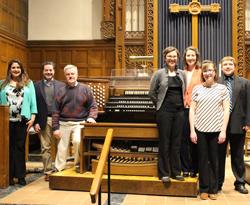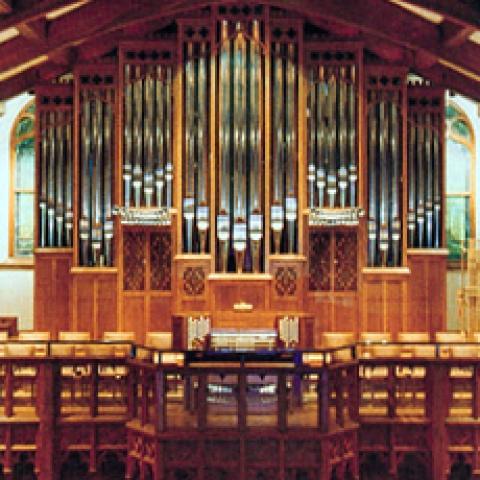
Organ and sacred music majors at the University of Michigan, Ann Arbor, participated in the Schoenstein Competition in the Art of Organ Accompaniment on March 29 at the First Presbyterian Church of Ann Arbor. The competition was made possible through a generous grant from Jack M. Bethards, president and tonal director of Schoenstein & Co., Benicia, California.
Sarah Simko, a graduate dual major in organ and harpsichord performance and a member of The Diapason’s 2017 Class of 20 Under 30, was awarded first prize of $1,000. Dean Robinson, an undergraduate with dual majors in organ/sacred music and computer science, received the second prize of $500. T
he competition was judged by University of Michigan alumni Scott Hanoian, Stephanie Nofar-Kelly, and Huw Lewis. The jury evaluated the competitors’ artistic use of the Schoenstein organ at First Presbyterian in a variety of organ accompaniments, including hymns, a vocal solo sung by Mahari Conston, and choral anthems performed with the Chancel Choir of First Presbyterian Church, Tom Granum, director.
Shown in the photo, participants in Schoenstein Competition, left to right: judges Stephanie Nofar-Kelly, Scott Hanoian, Huw Lewis; contestants Meghan Meloy Ness, Sarah Simko (1st prize), Annelisa Crabtree, and Dean Robinson (2nd prize)





